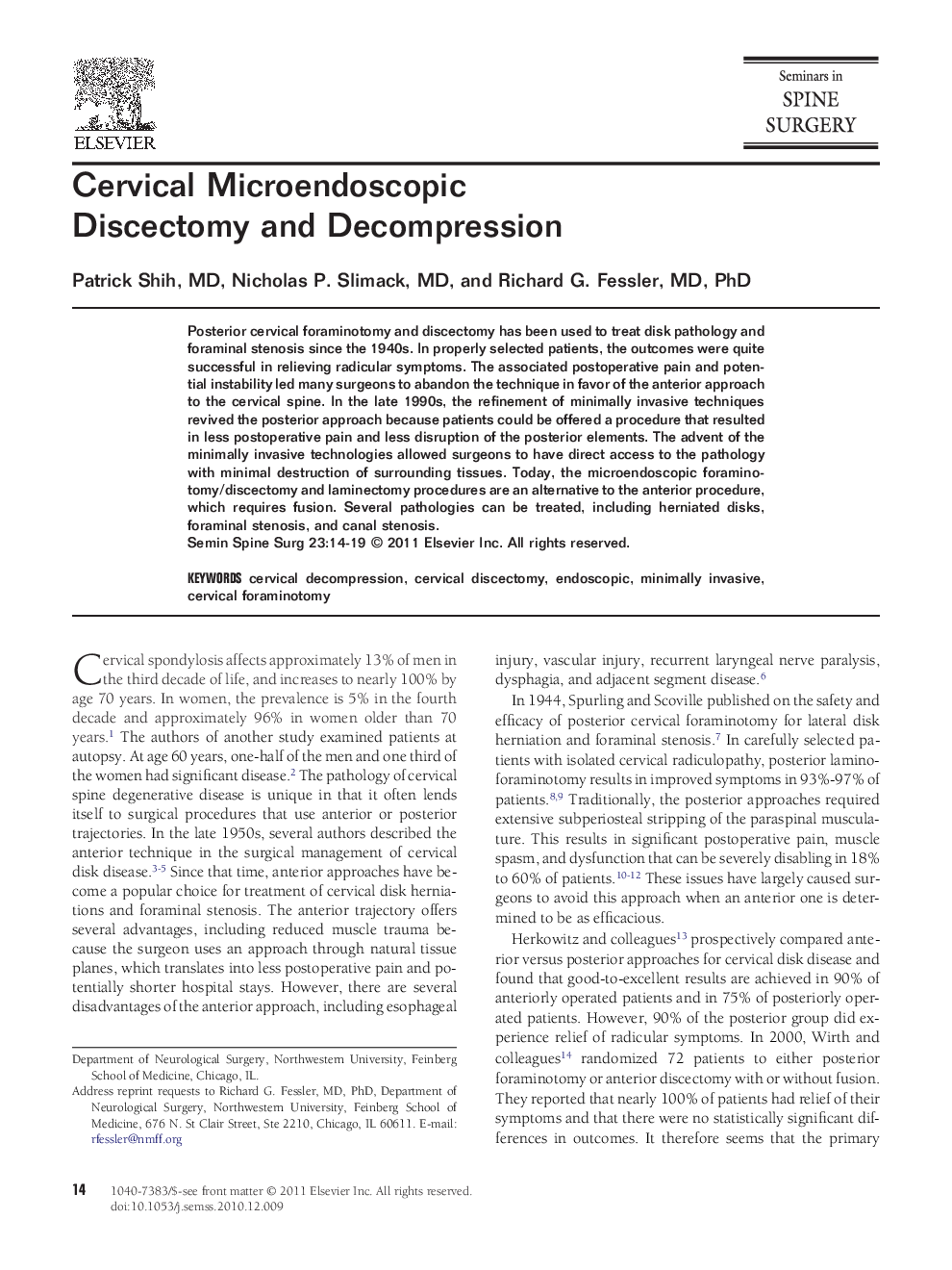| Article ID | Journal | Published Year | Pages | File Type |
|---|---|---|---|---|
| 4094852 | Seminars in Spine Surgery | 2011 | 6 Pages |
Posterior cervical foraminotomy and discectomy has been used to treat disk pathology and foraminal stenosis since the 1940s. In properly selected patients, the outcomes were quite successful in relieving radicular symptoms. The associated postoperative pain and potential instability led many surgeons to abandon the technique in favor of the anterior approach to the cervical spine. In the late 1990s, the refinement of minimally invasive techniques revived the posterior approach because patients could be offered a procedure that resulted in less postoperative pain and less disruption of the posterior elements. The advent of the minimally invasive technologies allowed surgeons to have direct access to the pathology with minimal destruction of surrounding tissues. Today, the microendoscopic foraminotomy/discectomy and laminectomy procedures are an alternative to the anterior procedure, which requires fusion. Several pathologies can be treated, including herniated disks, foraminal stenosis, and canal stenosis.
